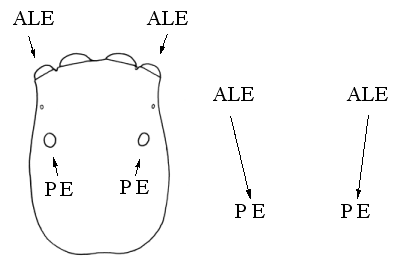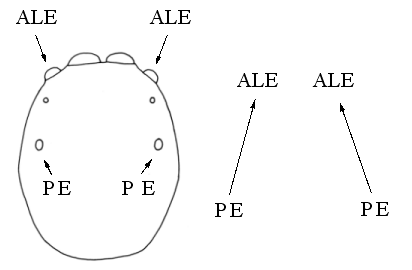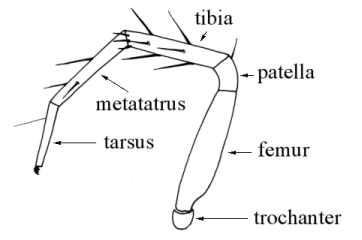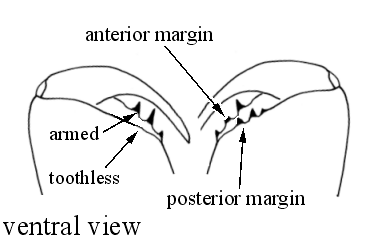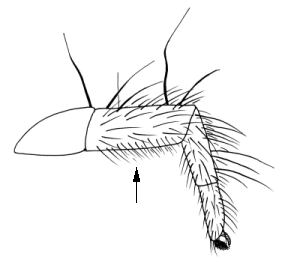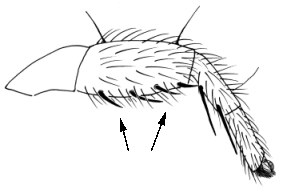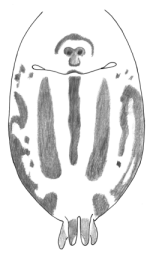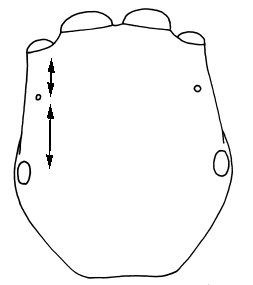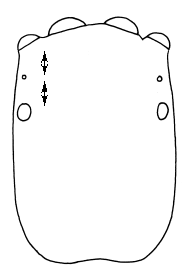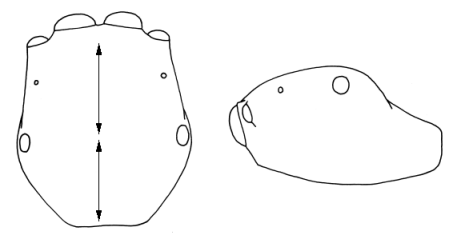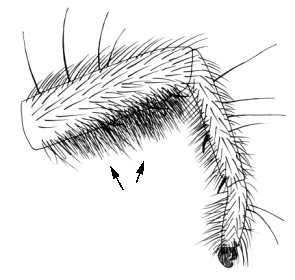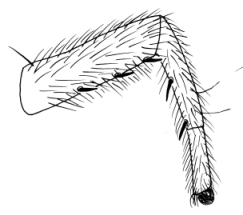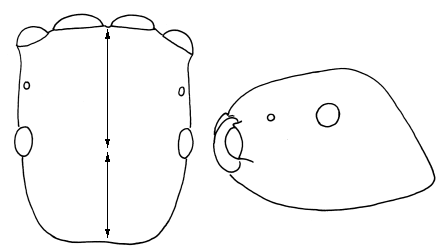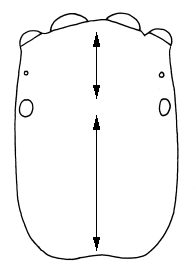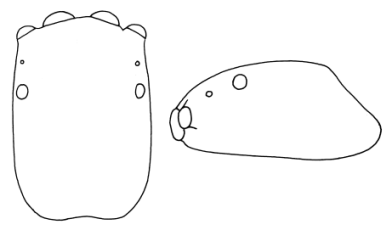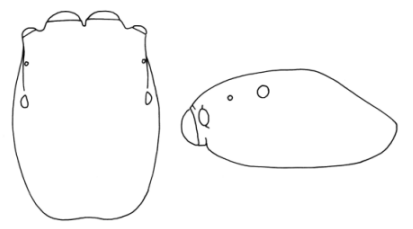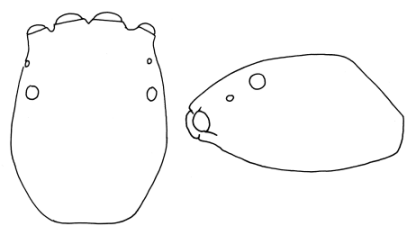|
1a |
Trapezoid formed by anterior lateral eyes (ALE) and posterior eyes (PE) such that the shorter edge is posterior (dorsal view) |
|
|
|
1b |
Trapezoid formed by anterior lateral eyes (ALE) and posterior eyes (PE) such that the shorter edge is anterior or ALE and PE form a square (dorsal view) |
|
|
|
Length of tibia III + patella III appreciably less then tibia IV + patella IV |
|
||
|
2b |
Length of tibia III + patella III almost equal tibia IV + patella IV genus Harbocentrum |
|
|
|
Posterior margin of chelicerae without teeth genus Sitticus |
|
|
|
|
3b |
Posterior margin of chelicerae armed with teeth genus Maevia |
|
|
|
Length of tibia III + patella III not less than tibia IV + patella IV |
|
||
|
4a |
Length of tibia III + patella III appreciably less than tibia IV + patella IV |
||
|
Leg I longer than leg III genus Evarcha |
|
||
|
5b |
Leg III longer than leg I genus Harbonattus |
|
|
|
Ti I without ventral setae genus Salticus |
|
|
|
|
6b |
Ti I with 3-4 pairs of ventral setae |
|
|
|
Ti I with 4 pairs of ventral setae genus Marpissa |
|
|
|
|
7b |
Ti I with 3 pairs of ventral setae |
|
|
|
Abdomen with three dark lines ventrally genus Ghelna |
|
|
|
|
8b |
Abdomen without such pattern |
|
|
|
Legs II, III, IV without dark markings, white almost transparent genus Hentzia |
|
||
|
9b |
Legs II, III, IV with dark markings |
||
|
Eyes of second row (smallest) appreciably closer to the first eye row than to the third row |
|
||
|
10b |
Eyes of second row (smallest) equidistant between the first and third rows of eyes |
|
|
|
Eyes of third row situated equidistant between anterior and posterior margin of carapace, or closer to posterior margin genus Zygoballus |
|
|
|
|
11b |
Eyes of third row situated closer to anterior margin of carapace, then posterior |
|
|
|
Tibia and metatarsi with dense hairs ventrally, ventral setae poorly visible genus Phidippus |
|
|
|
|
12b |
Tibia and metatarsi without dense hairs ventrally, ventral setae clearly visible genus Paraphidippus |
|
|
|
Eyes of third row closer to the posterior margin of carapace then to anterior margin genus Neon |
|
|
|
|
13b |
Eyes of third row closer to the anterior margin of carapace then to posterior margin |
|
|
|
Lateral margins of carapace almost parallel genus Euophrys |
|
|
|
|
14b |
Lateral margins of carapace concave |
|
|
|
Body coloration pale to dark reddish-brown, body size not less then 4 mm (usually ca. 5-6 mm) genus Pelegrina |
|
|
|
|
15b |
Body coloration from pale to dark brown, without red color, body size less then 4 mm (usually ca. 2-3 mm) genus Talavera
|
|
|
